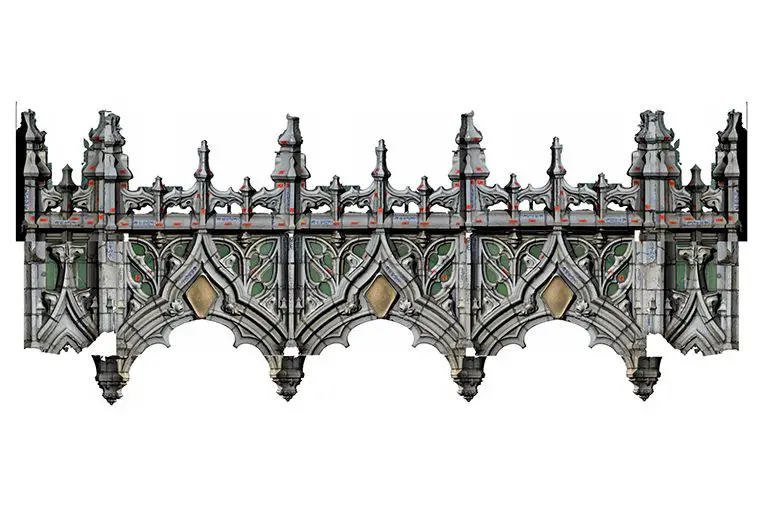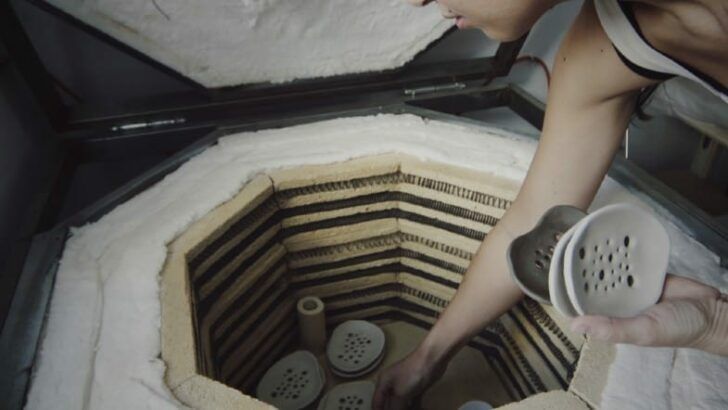What Is Brooklyn Red Clay?
Brooklyn red clay refers to the distinct red clay deposits found throughout parts of Brooklyn, New York. This clay has become an iconic part of Brooklyn’s landscape and history. Geologically, Brooklyn red clay dates back to the Pleistocene epoch when glaciers advanced and retreated across what is now New York City. These glaciers ground up rock into fine particles, depositing sediment as they melted. Over time, weathering and soil formation processes enriched the iron content in some deposits, giving the clay its distinctive red color. Historically, Brooklyn red clay supported a thriving local brick and pottery industry in the 18th and 19th centuries. The availability of high quality clay led many skilled artisans and entrepreneurs to set up shop in Brooklyn. Today, Brooklyn red clay can still be found across the borough, often uncovered during construction projects. It remains an important geological and cultural feature of Brooklyn’s natural and built environment.
Geological Origins
Brooklyn red clay formed over millions of years under specific geological conditions. The clay deposits originated from eroded reddish sandstone and shale of the Newark Group that was transported by ancient rivers and streams from the Appalachian Mountains westward across the Manhattan Prong region of New York City.1 These clay-rich sediments settled in Triassic-age rift basins about 200 million years ago when the supercontinent Pangaea was splitting apart.2
The clay deposits underwent compression from overlaying sediment layers, which hardened them over time. Weathering and erosion eventually exposed the clay at the surface, where Native Americans used them for pottery. Brooklyn red clay’s distinctive red hue results from high iron oxide content. The coarseness and plasticity of the raw clay make it well-suited for handbuilding and sculpting.

Physical Properties
Brooklyn Red Clay has a rich terracotta red color when fired to cone 6 in an oxidizing atmosphere. The clay body contains grog (pre-fired clay particles) which gives it a sandy, gritty texture. The rough texture makes it more challenging to use for throwing, but achievable for skilled potters.
The clay composition includes red burning iron-bearing clay blended with quartz, feldspar and grog. It has approximately 12.5% shrinkage at cone 6. The quartz provides thermal shock resistance while the grog improves structure and reduces shrinkage[1]. The firing temperature determines the final color, with a deeper red-brown achieved at cone 8.
Sources:
[1] https://www.standardclay.com/products/308-brooklyn-red-clay
Engineering Challenges
Brooklyn’s red clay poses numerous engineering challenges for construction and development projects. According to the study published by NYC OER, the red clay is highly compressible and consolidates when loaded, leading to settlement issues for buildings and infrastructure (https://www.nyc.gov/assets/oer/downloads/pdf/red-hook-brooklyn.pdf). The clay deposits can be over 100 feet thick in some areas of Brooklyn, exacerbating settlement and bearing capacity problems.
Structures built on the compressible clay may settle unevenly, causing cracks and structural damage. The soft and wet clay is also vulnerable to liquefaction during earthquakes. Pile foundations are often required to transfer loads to the underlying firmer sediments below the clay. Red clay’s low strength and high compressibility make excavation difficult and prone to collapse. Dewatering and shoring are necessary during excavations, adding time and cost.
Development of brownfields and waterfront sites must contend with destabilized soils and buried artifacts in fill materials. Near the Gowanus Canal, contaminated clay and silt must be contained and treated before redevelopment (https://www.standardclay.com/products/308-brooklyn-red-clay). Careful geotechnical engineering is crucial for successful, safe construction on Brooklyn’s red clay.
Famous Sites
Several iconic buildings in New York City were constructed on top of Brooklyn’s red clay soil. The unique engineering challenges posed by this clay led to innovative architectural designs.
According to Brownstoner, the Woolworth Building in Manhattan utilized terra cotta cladding to decorate its facade. Terra cotta was an ideal material for the soft soil conditions. Other notable buildings using terra cotta include the Flatiron Building, the Bayard Building, and the former Bell Telephone Laboratories in Greenwich Village.
In Brooklyn, according to Red Hook Waterfront, the Brooklyn Clay Retort and Fire Brick Works Storehouse building was constructed in Red Hook in the 1880s. The massive industrial complex took advantage of the abundant clay deposits for brick and tile production. Later buildings in the area continued to be built on deep foundations due to the unstable soil.
Modern Solutions
Brooklyn red clay presents many engineering challenges due to its unique properties. However, modern techniques have allowed builders to overcome these obstacles and construct buildings safely on this difficult soil.
One key development is the use of deep foundations such as piles that are driven through the weak clay layer down to bedrock. These provide stability and prevent buildings from settling unevenly (www.theceramicshop.com). Reinforced concrete mat slabs that “float” on the clay rather than being rigidly connected to piles have also proven effective, allowing some movement without structural damage.
In addition, lightweight materials can reduce stresses on the soil. Careful moisture control through covered walkways, proper drainage, and vapor barriers helps minimize swelling and shrinkage issues. Other modern building practices like the use of flexible pipes and joints accommodate soil movement. With proper engineering, Brooklyn’s red clay can be built upon safely.
Environmental Factors
Brooklyn’s red clay soil presents numerous environmental challenges. The clay is very dense and does not drain well, leading to poor drainage and flooding issues (https://www.nyc.gov/assets/oer/downloads/pdf/red-hook-brooklyn.pdf). During heavy rains, water can accumulate on the surface rather than percolating down through the soil. The Red Hook area of Brooklyn is particularly prone to flooding due to its low elevation and poor drainage from the clay soil (https://www.redhookconservancy.org/about-red-hook).
The clay soil also makes growing conditions difficult. The dense clay prevents proper aeration and drainage needed for healthy root systems. Only certain tolerant plant species can thrive in these conditions. Urban gardeners in Brooklyn often need to amend the native soil with compost and other additions to create a looser, nutrient-rich base for plants.
In addition, contaminants tend to cling to clay particles and remain concentrated in the topsoil rather than filtering down. Brooklyn’s industrial past led to pollution that still lingers in the surface clay today (https://www.redhookconservancy.org/about-red-hook). Proper remediation is needed to make former industrial sites suitable for new development and recreation.
Distribution in NYC
While Brooklyn is most well known for its red clay deposits, particularly in neighborhoods like Red Hook, other areas of New York City also contain significant deposits of this distinctive soil. According to sources, Staten Island is another borough characterized by reddish clay soil, which is likely related to the same glacial geology that deposited the clay in Brooklyn.
In addition to Staten Island and Brooklyn, some parts of Manhattan and the Bronx may also contain remnants of red clay. However, the bedrock geology in many parts of Manhattan and the Bronx tends to be more dominated by schist, gneiss and other metamorphic rocks, so red clay deposits are less extensive there.
Overall, Brooklyn and Staten Island contain the most substantial concentrations of red clay deposits in NYC, owing to their shared glacial history and lack of extensive bedrock exposures. But faint traces of the reddish glacial clay can be found scattered across many parts of the city.
Brooklyn Red Clay in Culture
Brooklyn red clay has made appearances in various works of art, literature, and film over the years. The unique red hue and texture of the clay has inspired many creatives. For example, the Brooklyn Immersionists were a group of writers and artists in the late 19th century who created works meant to “immerse” the viewer or reader in the sights, sounds, and feel of Brooklyn neighborhoods.
According to the Wikipedia article on the Brooklyn Immersionists, “About a foot beneath the dark, scrumptious dirt there’s a layer of red clay.” https://en.wikipedia.org/wiki/Brooklyn_Immersionists This quote refers to the red clay found beneath the topsoil across Brooklyn that inspired and featured in many Immersionist works. The visceral descriptions of the clay in their writing aimed to transport readers to the gritty urban environment.
References to the red clay of Brooklyn can also be found in novels, films, and artworks set in Brooklyn from various eras. The striking visual quality of the clay and its ubiquity in the borough’s soil lend it to frequent mentions and appearances across cultural mediums seeking to capture the essence of Brooklyn.
Conclusion
Brooklyn’s red clay is truly a distinctive and iconic geological feature of New York City. The deep red coloration and unique challenges it poses for construction and development have made it an integral part of Brooklyn’s identity and growth over the centuries.
This clay emerged millions of years ago from ancient seas, giving Brooklyn its reddish foundation. The clay’s density, moisture retention, and shifting properties continue to vex urban planners and engineers. However, modern techniques have enabled iconic structures like the Brooklyn Bridge and the subway system to overcome this difficult soil.
Brooklynites have embraced the red clay as part of their culture and local pride. Though it can be an engineering headache, the challenges and triumphs associated with building on this soil have shaped the fabric of Brooklyn itself. From brownstone townhouses to modern skyscrapers, Brooklyn’s identity is rooted in its red clay foundations.

